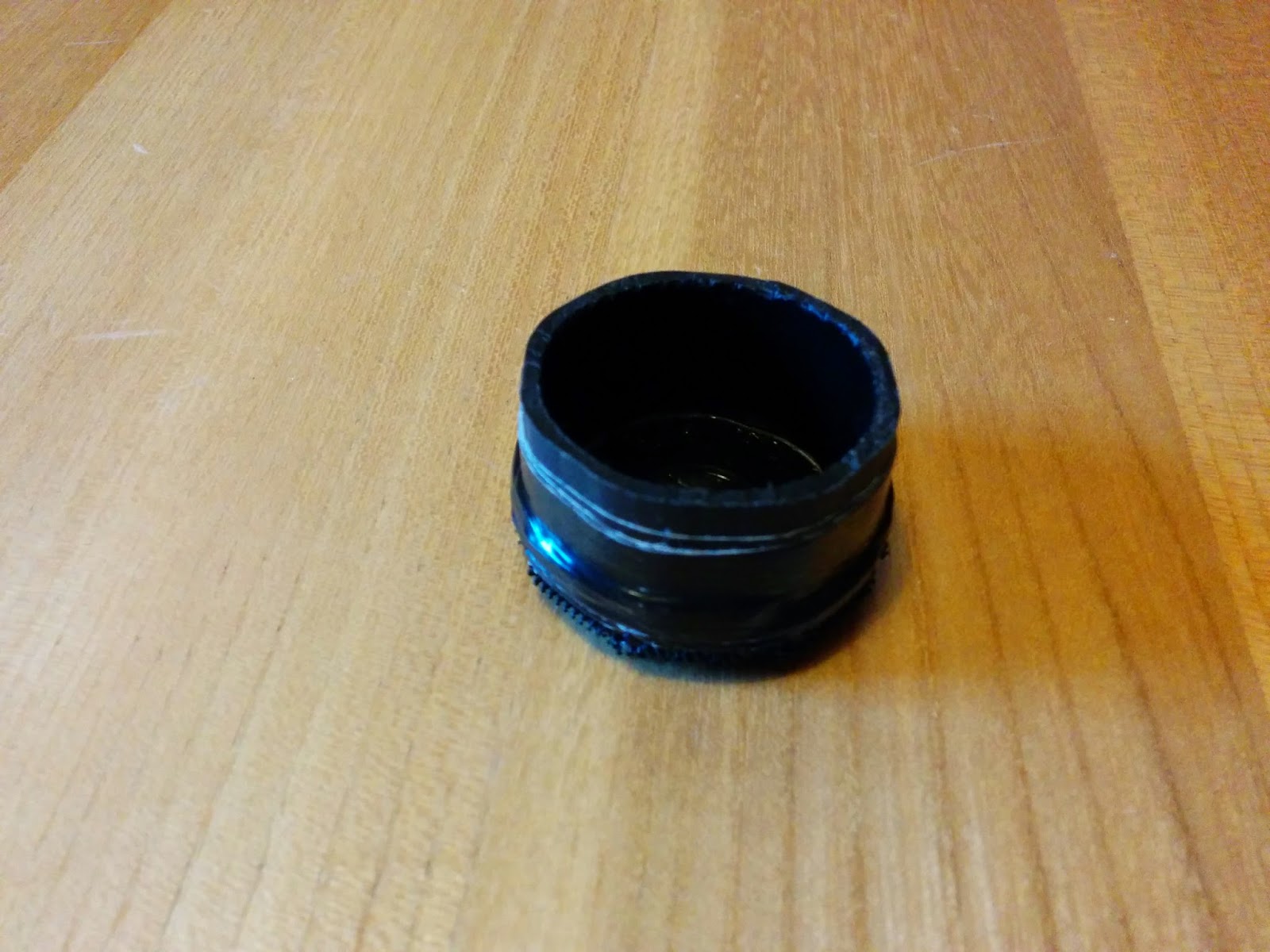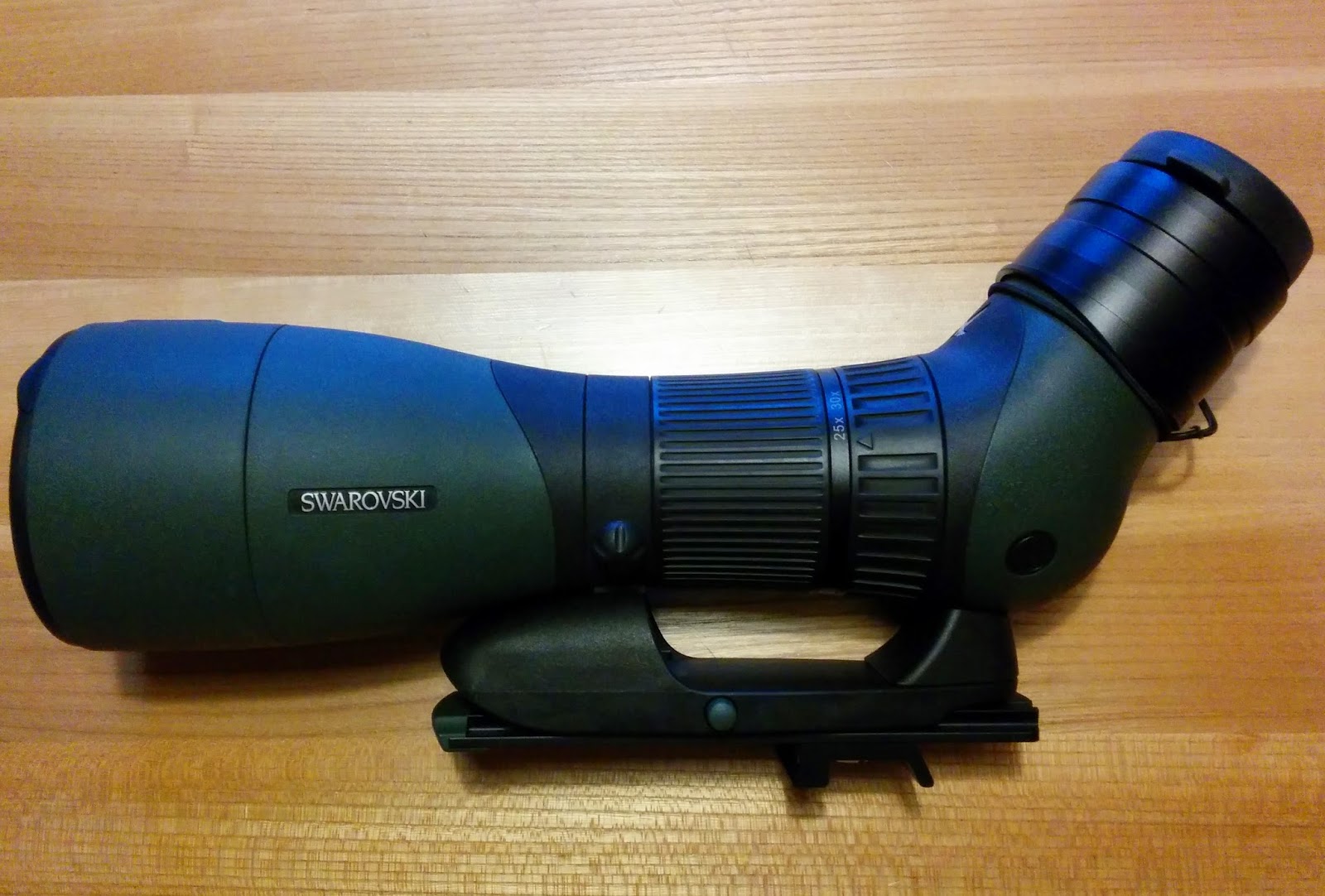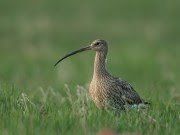What you need:
A case that fits the back of your phone.
Self-adhesive hook and loop fastener ("Velcro"). I found some 5 cm (2 in.) wide at Amazon. Try to get the widest and strongest you can find.
A 35mm film container or similar item that will fit snugly inside the eyecup or outside the ocular of your binoculars, here my trusty old Swarovski Habicht 7x42s. I saved a bunch of film containers when digital cameras arrived on the scene, but you can still find them online, e.g. at eBay.
Use a jar lid or similar item as a template to mark the back of the soft side ("loop" part) of the hook and loop tape. You want it to be 6 or 7 cm (2.5 to 3 in.) wide in order to accommodate several sizes of adapters. Cut along your marking.
Now use your smartphone case as a template to mark the hole in the middle. Then cut it out.
Take the backing off the tape, and press it firmly onto the phone case, centering the holes. Cut off the excess.
You will want to weigh the tape down with a stack of books overnight in order to create a stronger bond.
Now do the same thing with the hook part of the hook and loop tape, this time using the film container as a template. Cut a hole in the middle that's as big as the hole in your phone case. I used a 14mm (6/16 in.) drill bit. Then cut off as much of the rest of the film container to get your phone as close as possible to the binoculars (to avoid vignetting). I used my trusty table saw. Here's the result:
The surface area looks pretty small, but it works surprisingly well. Now insert your phone into the case, and stick your new adapter onto it.
Now insert this into the eyepiece of your binoculars.
And fire up your favorite camera app (or just the one that came with the phone).
Now point the whole thing at a bird (this one's hiding in the foliage).
As you can see, depending on how snugly the adapter fits into the eyepiece, one hand is free to zoom in (getting rid of the vignetting) and snap the photo.
This contraption also fits into the eyepiece of this newer model Swarovski SLC.
Here are a few photos taken with this setup:
If your new adapter doesn't fit into your eyepiece (here on a Swarovski CL) you can screw in the eyepiece where the adapter is and rest your phone on the other eyepiece.
With this setup you need both hands to hold the phone and adapter to the binoculars, making it hard to operate your camera app.
However, there are camera apps that react to your voice. You can take a picture, for example, by saying "take the picture"!
This can all be very tricky, however, so here's how I made an adapter to fit this model:
A friend had an old plastic vacuum cleaner nozzle that tapered slightly from one end to the other:
I cut off slices about 2 cm (1 in.) thick till I had a ring that fit snugly over the ocular:
Then I got a hole saw that would cut a circular piece of an old CD-ROM to fit exactly inside the plastic ring. First I pre-drilled a hole in a scrap of wood and clamped the CD-ROM centered on the drill hole:
This is the result of drilling the disc:
I had to cut off some extraneous plastic and flash with a Stanley knife to make the disc fit inside the ring. Then I cut off a piece of the hook and loop tape and stuck the ring on it:
Then I put the disc inside this:
Then I cut off the corners of the tape:
Then I made a few more snips to create some tabs:
Then I folded the tabs up and stuck them to the ring:
Then I taped some duct tape around the ring:
Then I cut a hole in the bottom of the hook and loop tape as large as the hole in the disc:
Done:
A couple photos from this new contraption:
None of these pictures will win prizes in a print publication of course, but if that's what you wanted, you wouldn't be using a smartphone. However, they're perfectly good for documentation purposes and for posting on your favorite social media site.
















































